Exploring World Largest Forests: Biodiversity, Resources, and Uniqueness in 20 Key Ecosystems Worldwide.
Forests play an essential role in human survival, serve as critical habitats for critical resources such as fresh water, and support more than half of all species on Earth. These diverse ecosystems cover approximately one-third of Earth’s total land area and are characterized by a diverse mix of trees, understory plants, fungi, mosses, a wide variety of animals, insects, and human societies. In addition to their beauty, forests make important contributions by preventing erosion and producing oxygen, a valuable resource. Explore the following compilation focused on the world’s largest forests and discover the unique features that make each forest stand out.
10. Sinharaja Forest Reserve, SriLanka
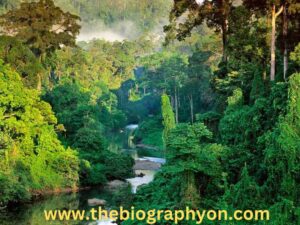
Sinharaja Forest Reserve is considered one of the last intact tropical rainforests in Sri Lanka and was recognized by UNESCO as a World Biosphere in 1978 and as a World Heritage Site in 1998. This living heritage boasts a rich ecosystem that is home to over 50% of the island’s endemic butterflies, mammals, reptiles, insects and rare amphibians.
This forest is spread across Galle, Matara and Ratnapura districts and is known for its biodiversity and important role in the island’s natural balance. Although small in size, it remains an important habitat with 60% of endemic trees, including rare species. Locals affectionately call it the “Lion Kingdom.”
Leopard reigns as the largest carnivore, and the forest reveals its splendor from January to May and from August to December. Home to more than 154 bird species and towering treetops up to 45 meters high, it has a unique charm. However, challenges remain, with illegal poaching and gem mining threatening its protected status. Despite 10 months of rain, the average temperature in this reserve is 20-25 ° C, except for the dry season in February. A haven for Sri Lanka’s endemic species, the Sinharaja Forest Reserve embodies the delicate balance between conservation and the threats it currently faces.
• Area: 34 square miles
• Forest Category: Tropical Lowland Rainforest and Sub-tropical Forests
• Established : April 1978
• Country: Sri Lanka
• Prominent Wildlife: Sri Lanka Crested Drongo and Green Pit Viper
9. Mindo Nambiro cloud forest, Ecuador.
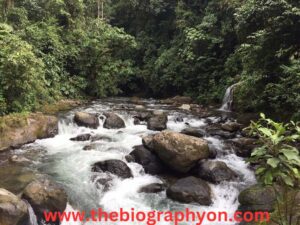
Located in the Andes Mountains, the vast Mindo Cloud Forest is an important ecological site in Ecuador and boasts a lush landscape. This cool, humid cloud forest covers approximately 74 square miles around the picturesque town of Mindo and is famous for producing chocolate known as “Mindo his chocolate.”
Mindo is known for its biodiversity and is located in the Amazon forest, which is home to a wide variety of flora and fauna. The towering mountains and flowing rivers reflect the richness of the Earth’s ecosystems. Before the Incas, Mindo was inhabited by the Yumbo Nigua people. It is now a privately owned reserve dedicated to protecting its endemic species.
The forest is home to more than 1,600 species of birds, frogs, and other creatures, as well as more than 450 species of birds and numerous orchids. Beyond its ecological importance, Mindo has a lot to offer, including chocolate tours, hiking, nature reserves, and early morning birdwatching tours. This extraordinary destination stands out and invites you to explore Ecuador’s natural wonders and cultural treasures.
• Area: 74 square miles
• Forest Category: Cloud Forest
• Established: 1861
• Country: South America
• Prominent Wildlife: Quetzals and Basilisks
8. Kinabalu National Park, Malaysia
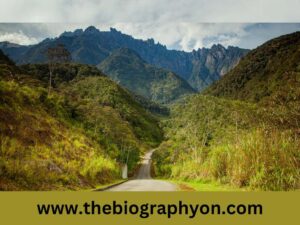
Malaysia’s first national park, Kinabalu covers the northern tip of Borneo and is home to the world’s youngest non-volcanic mountain, Mount Kinabalu. The diverse climates of mountains, clouds, lowland dipterocarps, and subalpine regions are home to a wide variety of plants.
UNESCO recognized Kinabalu National Park in 2000 in recognition of its extraordinary biodiversity. The park is home to 326 species of birds, 100 species of mammals, and 11 species of land snails. Bornean gibbons, goblins and orangutans are rare sightings, while mouse deer, squirrels and shrews are common.
Home to more than 5,000 species of vascular plants, including rhododendrons, orchid ferns and giant rafflesias, Kinabalu is a botanical paradise. Endemic bird species such as the Kinabalu Mountain Crowbird and the Kinabalu-friendly warbler add to its charm.
Mount Kinabalu attracts climbers, while the park’s river cruises offer sightings of orangutans, proboscis monkeys, pygmy elephants and saltwater crocodiles. Regarded as the center of plant diversity in Southeast Asia, Kinabalu National Park is a testament to Malaysia’s ecological wonders.
• Area: 291 square miles
• Forest Category: Mountain Rainforest
• Established: 1964
• Country: Asia
• Prominent Wildlife: Proboscis Monkeys and Rhinoceros Beetles
7. Daintree Forest, Australia.

The Daintree Forest in northern Queensland, Australia, is a UNESCO World Heritage Site and is thought to be the world’s oldest tropical rainforest. Residents embrace non-invasive tourism and note the unique flora, including rare species not found in other large forests.
Daintree is famous for its proximity to the Great Barrier Reef Marine Park, which is home to over 3,000 species, 395 of which are considered rare or endangered. Challenges to ecosystems arise from climate change, invasive species, and urban development.
Along major rivers such as the Mossman, Bloomfield and Daintree rivers, you’ll find amazing habitats ranging from the Odysseus butterfly to the white-lipped tree frog. This forest is home to over 12,000 species of insects and special plants that don’t grow anywhere else.
Named “Green Dinosaur”, ancient plants coexist with poisonous snakes, colorful birds, and various reptiles. Ahofruit is a local favorite. Visited by 400,000 people a year, the Daintree’s ecological wonders can be seen during the rainy season from December to March.
• Area: 463 square miles
• Forest Category: Wet Tropics Rainforest
• Established: 1988
• Country: Australia
• Prominent Wildlife: Saltwater Crocodiles and Southern Cassowaries
6. Rainforest of Xishuangbanna, Jianghong, China.

The Xishuangbanna Rainforest, located in southwestern China’s Yunnan province, is a globally protected rainforest. The area is divided into numerous subtypes, with eight types of vegetation, of which 58 are classified as extremely rare. The
rainforest serves as a living museum, home to more than 3,500 scientifically recorded species of flora and fauna, and supports China’s ecosystem research network.
Lush tropical vegetation is of scientific value, and endangered species such as the Indochinese tiger, Asian elephant, and gibbons thrive within its borders.
China.
Surrounded by mountains, the reserve enjoys a humid climate, protected from the cold northerly winds and exposed to the moisture of the sea. The annual rainfall ranges from 40 to 80 inches, and it is characterized by hills, green pools, and the Lancang River system. The biodiversity and rarity of the Xishuangbanna rainforest represents a research paradise that provides rich diversity for scientific exploration.
• Area: 927 square miles
• Forest Category: Tropical Rainforest
• Established: 1959
• Country: Asia
• Prominent Wildlife: Asian Elephants, Indo-Chinese Tigers, and Green Peacocks
5. Sundarbans, Bangladesh, India

The Sundarbans is considered the world’s largest contiguous mangrove forest, spanning India (40%) and Bangladesh (60%). Recognized as a UNESCO World Heritage Site, this “halophytic” rainforest thrives on high salinity and water levels.
An intricate network of waterways provides extensive access and enhances the thrill of exotic jungle exploration. Bengal tigers, the embodiment of forest majesty, roam the famous Green Delta, the dense evergreen delta formed by the Brahmaputra and Ganges rivers.
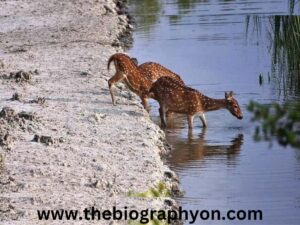
The Sundarbans serves as a safari hotspot in India and West Bengal and is home to numerous endangered species including 50 species of mammals, 60 species of reptiles, over 300 species of birds, and 300 species of plants. It lives. The Ganges, Brahmaputra, Padma and Meghna rivers flow through this amazing Bay of Bengal.
Dense jungles are home to elusive snakes and crocodiles, but visibility is good in coastal areas. The importance of the Sundarbans, designated a biosphere reserve by UNESCO, is highlighted by the establishment of his three nature reserves in Bangladesh in 1997. This diverse ecosystem cements its place among the top 10 largest forests in the world.
• Area: 3,900 square miles
• Forest Category: Halophytic Mangrove Rainforest
• Established: 1984
• Country: Bangladesh and India
• Prominent Wildlife: Bengal Tiger and Water Monitor Lizard
4. Tongass, Alaska, USA
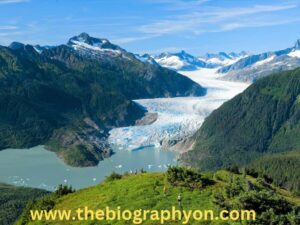
America’s largest national forest, Alaska’s Tongass, is one-third designated as wild. Huge glaciers, characterized by extreme climatic conditions, attract tourists. The Tongass serves as an important buffer against climate change, absorbing 8 percent of the country’s annual global warming pollution and retaining 10 to 12 percent of its carbon in national forests.
Unfortunately, logging affected the size and state. This forest is home to Alaska’s glaciers, which contain huge ice sheets. Abundant wildlife completes the experience, including the highest concentrations of bears, salmon-filled rivers, and the famous bald eagles.
The Tongass is home to otters, beavers, humpback whales, killer whales, and the rare Alexander Islands wolf.
Home to five species of salmon, the Tongass River is a special place known as the “Inside Passage” or Gateway to Alaska. High employment sectors include commercial fishing, recreation, and tourism. The forest offers a variety of recreational activities, from camping and hiking to boating and fishing. One of the largest forests, the Tongass is a natural haven for exploration and ecological assessment.
• Area: 26,278 square miles
• Forest Category: Temperate Rainforest
• Established: September 10, 1907
• Country: North America
• Prominent Wildlife: Orcas, wolves, and beavers
3. Valdivian Temperate Rainforest, Southern South America.

At the southern tip of South America, between the Andes and the Pacific coast, lies the temperate Valdivian rainforest. This biodiversity paradise receives abundant rainfall and supports a unique ecoregion where half of the woody species are endemic.
Excessive logging threatens ancient trees, which are often replaced by fast-growing eucalyptus and pine trees. Westerly winds contribute to increased rainfall and maintain the forest’s lush vegetation, including endemic monkey trees, evergreens, bamboo, and giant ferns.
This rainforest is home to fascinating creatures such as the Kodkod, the world’s smallest cat, and the Southern Pudu, the world’s smallest deer. He’s adorable and huge. National parks, lakes, beaches, rivers, islands and hiking trails add to its charm. As
biogeographical islands, he is one of the most beautiful and vast forests in the world. Valdivia’s temperate rainforest includes his four ecosystems: evergreen forest, Patagonian Andean forest, deciduous forest, and northern Patagonian forest. However, this forest is at risk due to plantation development, deforestation, and the replacement of native trees with more commercially lucrative tree species, such as the Antarctic allele Sebina.
• Area: 95,800 square miles
• Forest Category: Temperate Rainforest
• Established: Nil
• Country: South America
• Prominent Wildlife: Southern Pudu, Kodkod, and Wild Boars
2. Tropical Rainforest of Congo, Central Africa.

Congo Rainforest is located in Central Africa, primarily the Democratic Republic of Congo, and is considered the second largest rainforest in the world. Known for its vast biodiversity, the island is home to over 600 species of trees and a wide variety of wildlife, including gorillas, chimpanzees, leopards, forest elephants, hippos and lions.
The Congo rainforest receives an average annual rainfall of more than 58 inches and is densely covered with vegetation, making it a difficult environment for human exploration. This impenetrable cover protects many ecosystems such as savannah forests, extensive lowland forests, coastal forests, and wetland forests. However, the region faces increasing vulnerability due to activities such as clearing land for agriculture and commercial logging.
The Congo rainforest is often referred to as the Earth’s “second lungs” and, along with the Amazon, stores almost 8 percent of the world’s forest carbon. This vast basin affects countries such as Angola, Burundi, Cameroon, Tanzania, Republic of Congo, Central African Republic, Rwanda, South Sudan, and Zambia.
The forest’s dense canopy reaches about 100 feet in height and contributes to its warm climate, although in certain areas the vegetation is so dense that only 1 percent of sunlight penetrates.
forest floor. Despite its challenges and threats, the Congo rainforest remains an important global ecosystem, playing an important role in maintaining biodiversity and regulating the Earth’s climate.
• Area: 781,249 square miles
• Forest Category: Tropical Rainforest
• Established: late 19th century
• Country: Africa
• Prominent Wildlife: Leopards, Okapi, and Hippos
1. South America’s Amazon Rainforest

The largest green space on earth, the Amazon Rainforest is a treasure trove of biodiversity, with more than 1 million recorded species living in its vast watershed. Located in her second longest and largest river in the world, the Amazon boasts a breathtaking, but also potentially dangerous, ecosystem. It is home to iconic habitats such as the jaguar, manatee, rosewood, and Brazil nut, which contribute to the abundance of life in this lush, humid environment.
This vast, humid deciduous rainforest is known for its high rainfall, high humidity, and consistently high temperatures. There are approximately 3,000 types of fruit, more than 2,000 of which are used by indigenous tribes, demonstrating the important role of forests in sustaining diverse cultures. Despite its vital importance, the Amazon rainforest faces a variety of threats, including deforestation, human intervention, and exploitation, endangering the delicate balance of this ecological paradise. Masu.
The Amazon rainforest spans nine South American countries, including Brazil, Peru, and Colombia, and is home to an incredible variety of mammals, birds, fish, and insects. In addition to its natural wonders, it provides more than 20% of the planet’s oxygen, highlighting its important role in the global ecological balance.
The Amazon River, considered the life force of this vast jungle, flows through the heart of the Amazon.
However, the region is plagued by environmental problems such as global warming and biodiversity loss, raising concerns among environmentalists. Deforestation, especially in Brazil, poses a serious threat and highlights the urgency of conservation efforts to protect one of the world’s most iconic and important ecosystems.
• Area: 2,300,000 square miles
• Forest Category: Broadleaf Rainforest
• Established: From 56 million years to 33.9 million years ago
• Country: South America
• Prominent Wildlife: Jaguars and Tapirs











